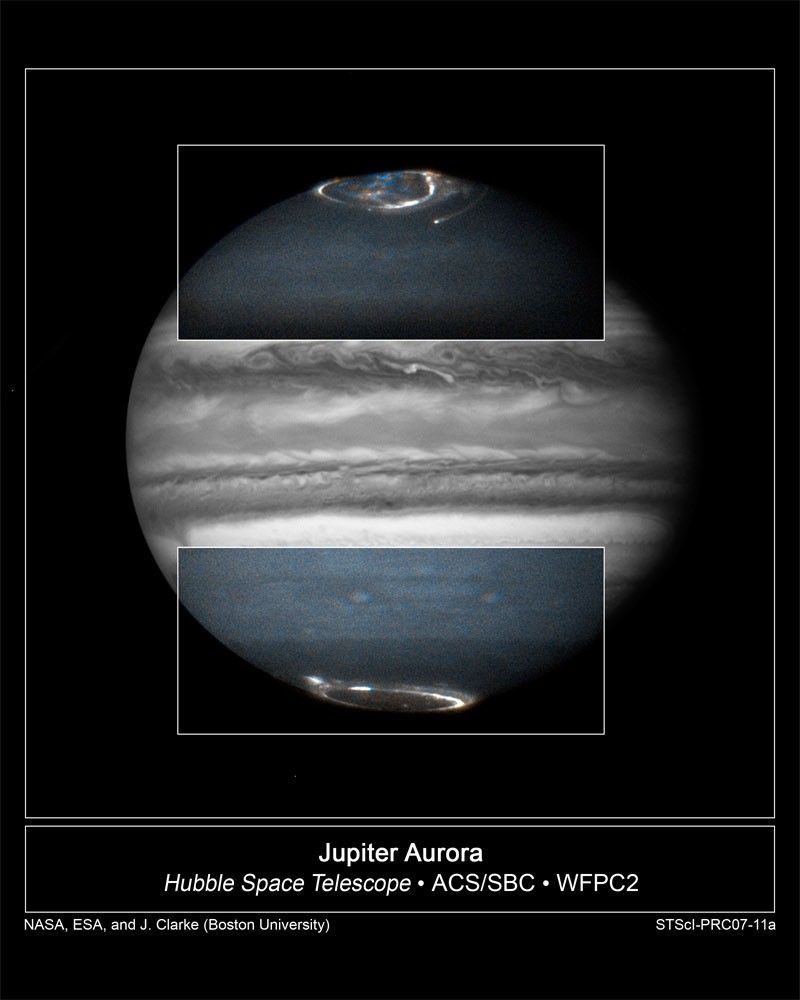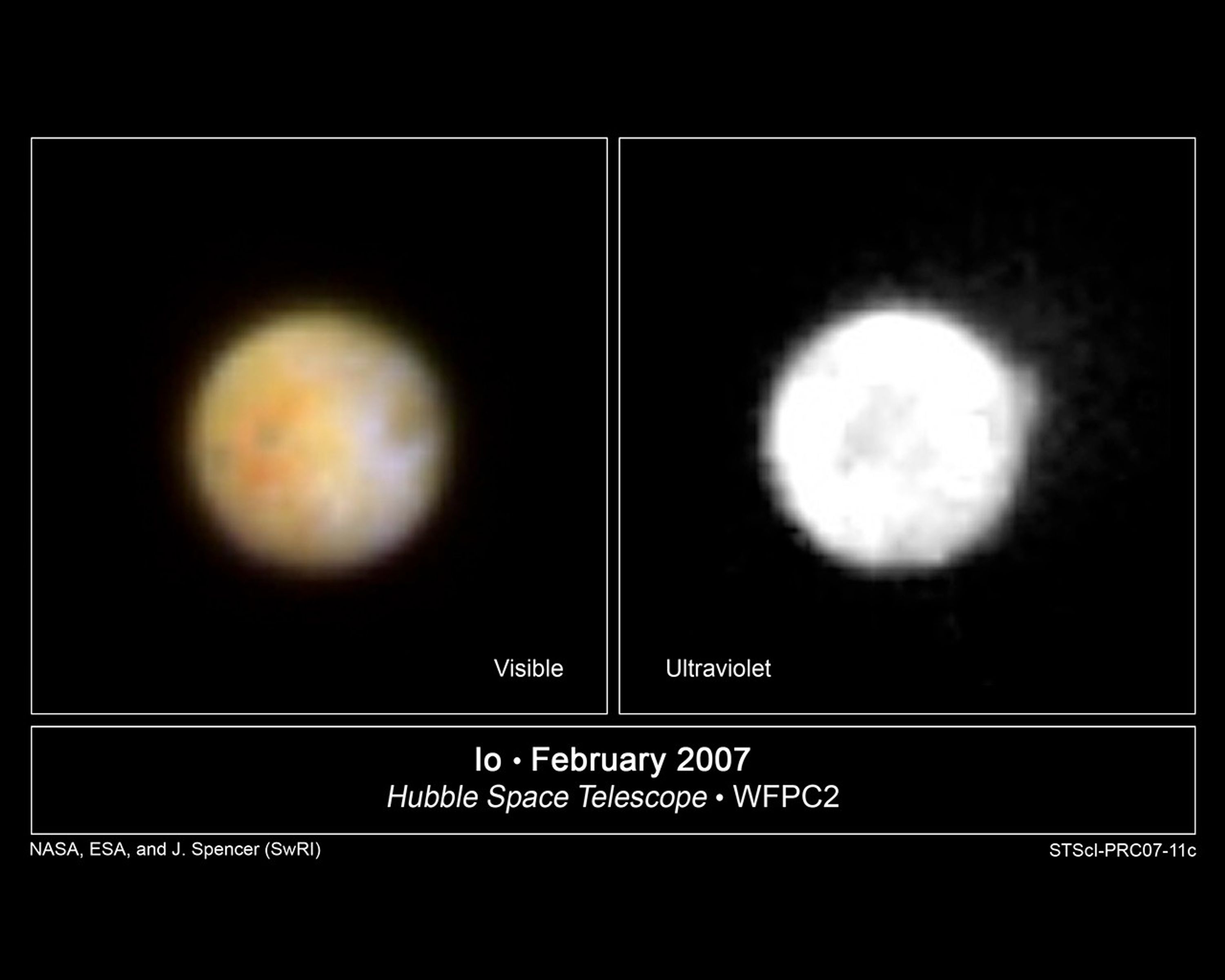1 min read
Hubble Follows Jupiter Aurorae

Combined ultraviolet- and visible-light images of Jupiter from NASA's Hubble Space Telescope were taken from February 17-21 in support of the New Horizons flyby of Jupiter on February 28.
The image segments in the boxes were obtained using Hubble's Advanced Camera for Surveys's ultraviolet camera. The ultraviolet images show auroral emissions that are always present in the polar regions of Jupiter. They are typically 10-100 times brighter than the northern lights seen on the Earth. The aurorae are produced when charged particles from the Sun become trapped in Jupiter's powerful magnetic field. They cause gasses to fluoresce high in Jupiter's atmosphere, near the planet's magnetic poles.
The equatorial regions of Jupiter in this photo were imaged in blue light on February 17, 2007 by the Wide Field Planetary Camera 2. This reveals cloud features in Jupiter's main atmosphere. In the ultraviolet views, the atmosphere looks more hazy because sunlight is reflected from higher in the atmosphere.
Hubble will continue to photograph Jupiter as well as its volcanically active moon, Io, over the next month as the New Horizons spacecraft flies past Jupiter. New Horizons is en route to Pluto, and made its closest approach to Jupiter on February 28, 2007.
Through combined remote imaging by Hubble and in situ measurements by New Horizons, the two missions will enhance each other scientifically, allowing scientists to learn more about the Jovian atmosphere, the aurorae, and the charged-particle environment of Jupiter and its interaction with the solar wind.
About the Object
- DistanceDistanceThe physical distance from Earth to the astronomical object. Distances within our solar system are usually measured in Astronomical Units (AU). Distances between stars are usually measured in light-years. Interstellar distances can also be measured in parsecs.The semi-major axis of Jupiter's orbit about the sun is 5.2 Astronomical Units (778 million km or 483 million miles).
- DimensionsDimensionsThe physical size of the object or the apparent angle it subtends on the sky.The planet has a diameter of roughly 88,789 miles (142,984 km) at the equator.
About the Data
- Data DescriptionData DescriptionProposal: A description of the observations, their scientific justification, and the links to the data available in the science archive.
Science Team: The astronomers who planned the observations and analyzed the data. "PI" refers to the Principal Investigator. - InstrumentInstrumentThe science instrument used to produce the data.HST>ACS/SBC (aurora images), HST>WFPC2 (full planet image)
- Exposure DatesExposure DatesThe date(s) that the telescope made its observations and the total exposure time.February 20-21, 2007 (aurora images), February 17, 2007 (full planet image)
- FiltersFiltersThe camera filters that were used in the science observations.115nm and 125nm (aurora images) 410nm and 673nm (full planet image)
- Object NameObject NameA name or catalog number that astronomers use to identify an astronomical object.Jupiter
- Object DescriptionObject DescriptionThe type of astronomical object.Planet, Aurora
- Release DateMarch 1, 2007
- Science ReleaseHubble Monitors Jupiter in Support of the New Horizons Flyby
- Credit
Related Images & Videos

Hubble Images Jupiter in Support of the New Horizons Flyby
NASA's Hubble Space Telescope took this true-color view of Jupiter in support of the New Horizons Mission. The image was taken with Hubble's Wide Field Planetary Camera 2 on February 17, 2007, using the planetary camera detector. Jupiter's trademark belts and zones of high- and...

Hubble Observes Volcanic Io
NASA's Hubble Space Telescope is monitoring the volcanically active moon Io in support of the February 28 New Horizons spacecraft flyby of Jupiter. These images were taken with Hubble's Wide Field Planetary Camera 2 on February 14, 2007. The left image, taken in natural color,...
Share
Details
Claire Andreoli
NASA’s Goddard Space Flight Center
Greenbelt, Maryland
claire.andreoli@nasa.gov

































